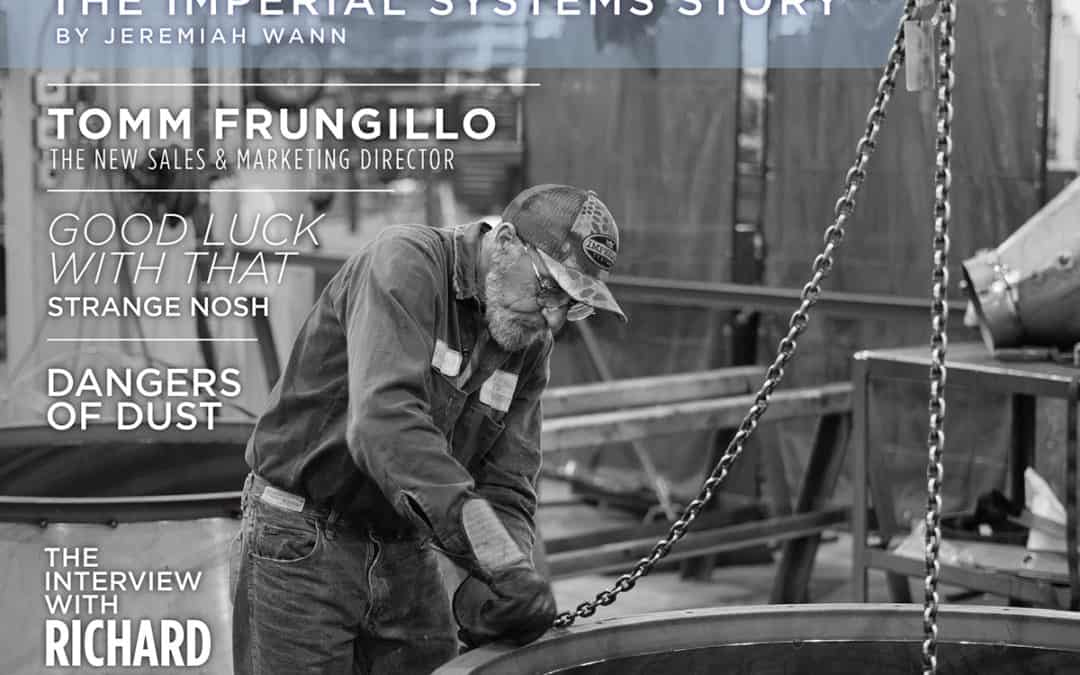
by Scott Stearns | Nov 26, 2018 | Uncategorized
Dusty Jobs Issue 7 is the third quarter of the year. Check out the articles! Charlie is back with an article about food, and we interview one of our welders, Richard Matters. If you would like a printed hard copy of this issue of the quarterly newsletter, contact your Imperial System Sales Rep.
Click the cover to download and print the newsletter.
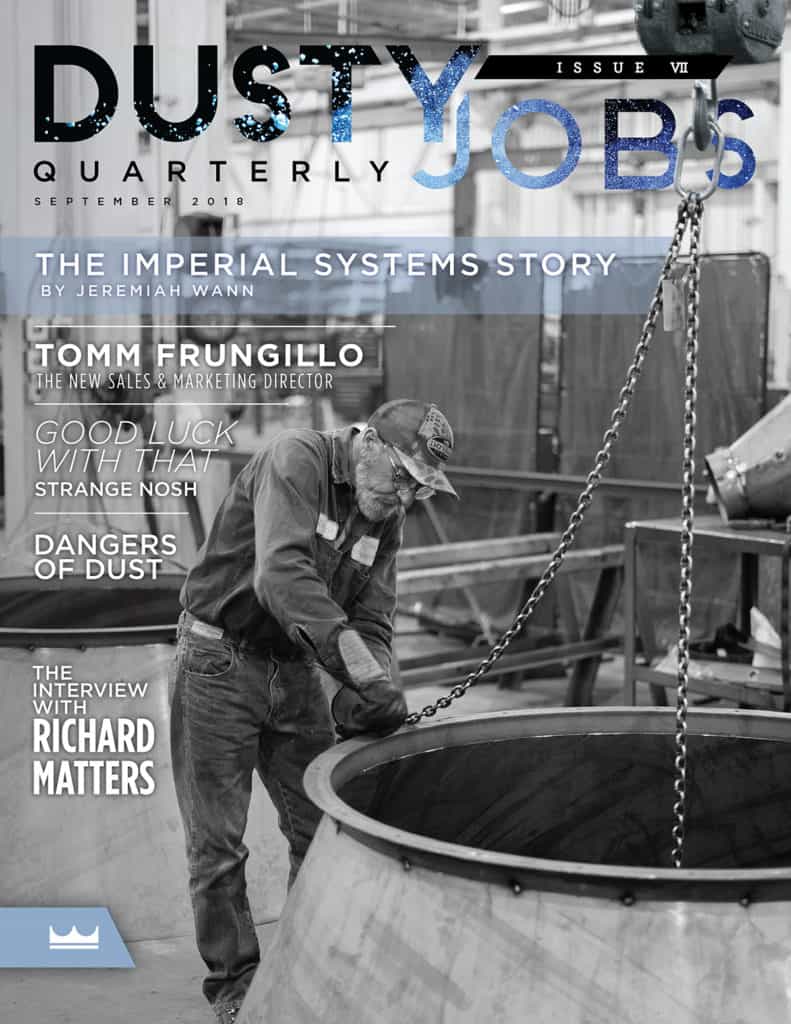
CLICK THE ARTICLE TO READ.





Read more
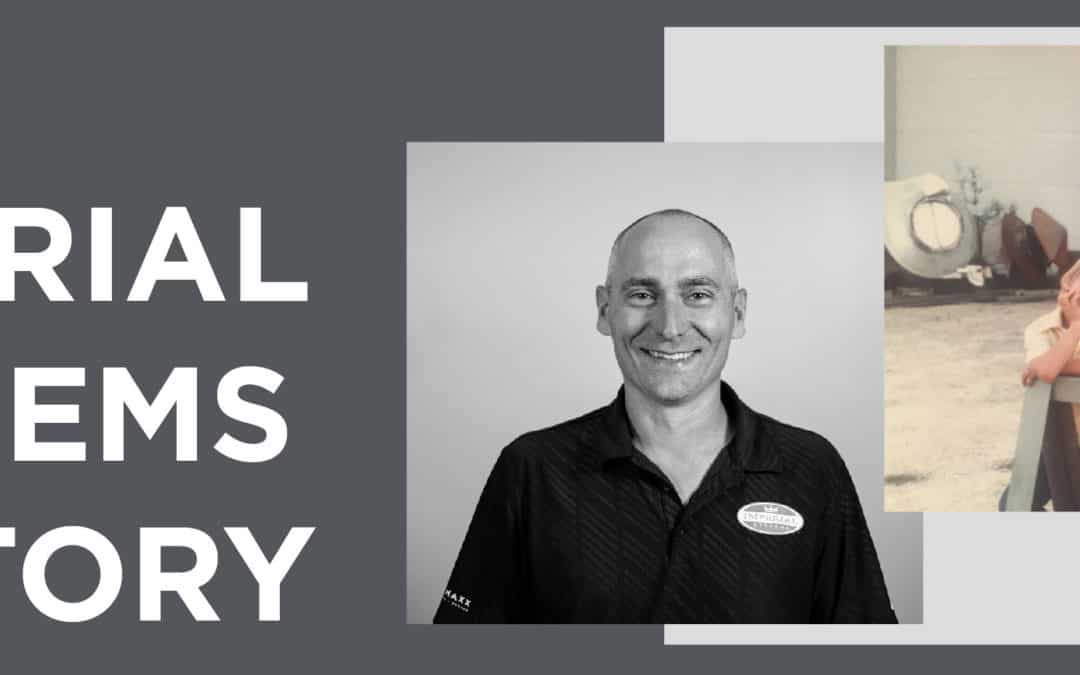
by Scott Stearns | Nov 26, 2018 | Hidden from Archive

For several years, I worked as a Sales Rep for a large, European‑owned dust and fume collection company. Like most of the big companies in this industry, they had an aggressive way of doing business that was not consistent with how I believed things should be done. They called it “filling holes,” which was the practice of sizing dust and fume collection equipment large enough to perform well, but not at a capacity that would minimize periodic filter replacement. Regrettably, I condoned it for far too long. How did I reach the tipping point where I decided to start my own business? My story starts with my granddad.
I grew up in a family-owned and operated sheet metal shop. My granddad, a loving and driven man, had me slagging parts and sorting hardware by age seven. I spent every minute of every summer in and around the shop. It was a noisy, greasy and busy place – and I loved it! At an early age, I was fascinated to learn what a cyclone and baghouse were and how they were built. Warm family gatherings always included shop talk and I would eagerly sit in on those conversations, listening to every word. Today is no different. I still love fabrication and never pass up an opportunity to tour a fabrication facility. Dust and fume filtration is truly in my blood.
I started as a sales rep in my early 20’s. At the time, the industry was led by a couple of company giants who promoted the practice of filling holes. I was quickly taught to stretch the limits, get the orders and move on to more projects. This philosophy was fundamentally against what I had learned growing up in the family business. Unfortunately, top dust and fume collection companies continue with this practice today. But being ambitious and eager to please, I unwisely suppressed my opinion of it and sold collectors in this manner for years. Increasingly unhappy with my circumstance, conviction compelled me to start my own business.
In October 2001, I founded Imperial Systems with the mission that my company would build the best dust and fume collection equipment on earth. Our collectors would be designed and built from an end user’s point of view, last longer and filter better than any other collector on the market. Growing up in manufacturing, I knew that one of our strongest attributes was that we were a company that knew how to design, build and install complete systems from start to finish. This was a distinct advantage over the big companies and still holds true today. Every one of our sales engineers has spent time in the field installing systems so that they understand what they’re selling and what it takes to get equipment properly designed for a dependable installation.
For years we successfully built and sold cyclones, baghouses, ducting and airlocks. In 2010, I decided to expand the company by building cartridge style dust collectors. When we started, we copied a major brand’s collector almost exactly. Unfortunately, this was a mistake for several reasons. For one, it did not differentiate us from our competitors. The technology was old, and by replicating it we made ourselves a “me-too” brand. The only way to compete was on price, which immediately put us at a disadvantage. We were the smallest industrial dust collector manufacturer in the industry. Why would someone buy from us over one of the larger, more established companies? When it was all about price, we would win a job but lost money as a consequence. Regrettably, I realized that copying a competitor was a short-sided strategy. Being a “me-too” company is not what I had envisioned as our future.
So, we regrouped and made some innovative design changes. We committed to build a better cartridge dust collector and differentiate ourselves from our competitors. It was then that I realized that our strength was in our differences. From that point on, we reminded ourselves of this insight at every design and engineering meeting. It became a mantra as we insisted on being innovators, not copiers. That’s when our business started to thrive. Independent sales reps started calling us unexpectedly to represent our product line. We started winning the majority of the quotes that we were working on. It was a new beginning for the newly designed CMAXX, now the flagship of Imperial Systems.
I am proud of the new approach and success that Imperial Systems has had with the CMAXX. The innovations came from customers reporting to us the problems with other equipment that they have had for years. They spoke and we listened. Because of these innovations and loyal customers, Imperial Systems is now the most progressive dust and fume collection company in the industry today. Ironically, CMAXX is now the most copied collector on the market!
I guess you can say we are now doing things right. We’ve emerged with dignity from being an ambitious imitator to an industry thought leader. We are transparent about the solutions we provide to fill needs, not holes. I’m so grateful to my granddad for his influence on my life. And I thank every member of the Imperial Systems team for fulfilling my true vision of this company.
Read more
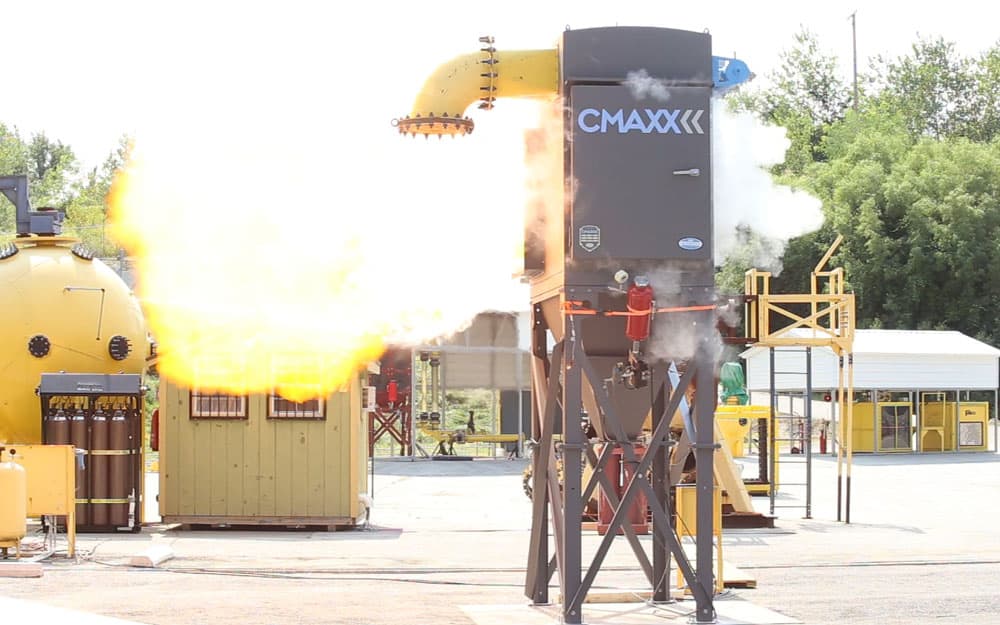
by Scott Stearns | Jul 20, 2018 | Uncategorized
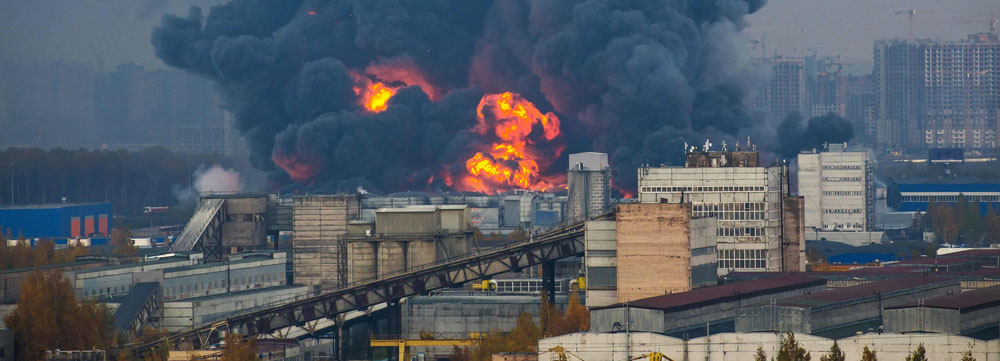
A fire or an explosion can destroy expensive equipment, damage, or even wreck your building. It can certainly cause injury or death to workers. Dust and fume collection systems are often collecting some type of combustible material. So, these systems often require fire or explosion control systems as well as other types of safety systems.
Difference Between Fire and Explosion Control
It’s important to understand how a fire and an explosion are different. Fire is caused is when a substance rapidly consumes oxygen to produce heat and light. An explosion is an event where energy rapidly expands outward from the source, often creating a damaging shock wave. A fire may not cause an explosion, and explosions can happen without fire. For example, logs in a fireplace can slowly burn for a long time, producing flames and heat. Also, a pressurized tank of gas can explode if the material inside expands.
Is Combustible Dust Flammable or Explosive?
The answer is often both, depending on the conditions. If you try to light a block of metal on fire, not enough of the titanium is exposed to the air to start a fire. However, if you grind up that metal or turn it into gas with a welder, those tiny particles are exposed to plenty of air, and if there is an ignition source, they can catch on fire. Some metals, like titanium, burn so hot that once they are ignited, they can actually use water to burn even more, so using water to put them out just makes it worse.
Another example is sugar. Most of us use sugar all the time without realizing that it’s even flammable. However, an airborne cloud of sugar can combine with oxygen so quickly that it causes a violent explosion. Many other materials behave like sugar: once they become airborne, they can cause dangerous explosions because a fire can ignite the material so quickly.
A dust collector can be a perfect environment for a fire or explosion. Lots of dust inside an enclosed space can be very dangerous if it starts to burn, and it can be explosive. So how do you protect your dust collection system from fire or explosions?
Dust Fire and Explosion Control Devices
Spark detectors, spark trap, and abort gates can all act as fire prevention devices. One common choice for fire prevention is a spark detector. A spark detector will sense a spark before it gets into the dust collector, and it can activate other devices.
The spark detector might activate an abort gate. This will drop and deflect any sparks, fire, or smoke away from the facility and divert it safely. A spark trap installed in the ductwork and purposefully creates turbulence in the airflow. This knocks a spark around until it loses so much heat that it can’t start a fire.
These are devices that protect you and your facility from a fire. There are also chemical suppression systems that can be activated by the spark detector and extinguish a spark before it can start a fire. These systems can also put out a fire once it has started to keep it from spreading and prevent damage.
An in-line deflagration arrestor (IDA) is a type of system design. It protects your facility from explosions by stopping a flame front and preventing it from traveling back into the facility. IDA dust collectors include special filters that help extinguish a flame front and prevent it from going any further.
Explosion isolation valves are triggered by pressure to close off and prevent the explosion from traveling any further. A fast-acting slide gate can also be triggered to contain the explosion inside the dust collector. Once an explosion has occurred, there’s one, primary safety concern. That’s preventing it from getting back into the building or from causing damage or injury.
Devices like explosion vent panels or flameless explosion venting do not prevent explosions. But they do vent the explosion safely if one does occur.
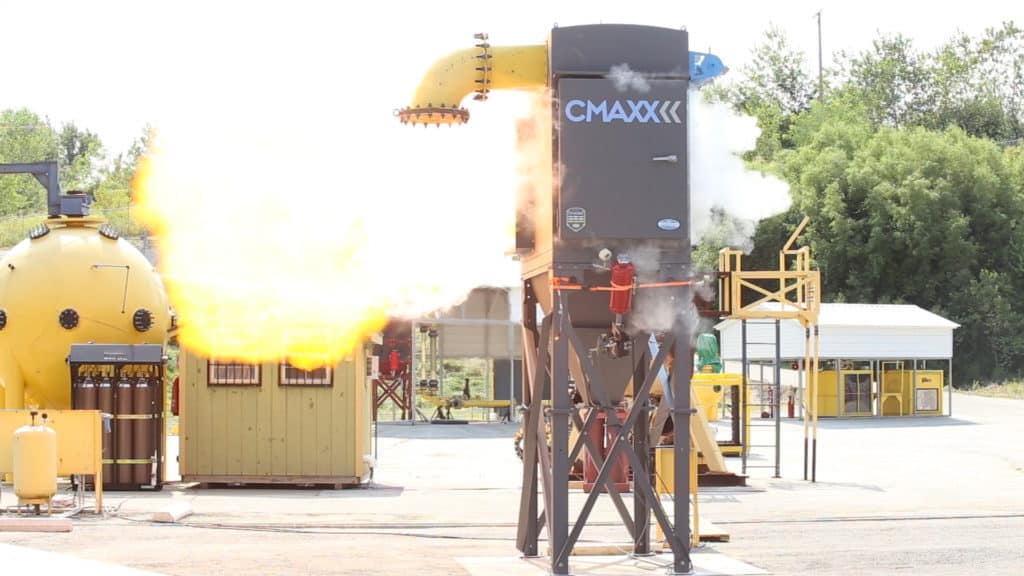
Let’s Figure It Out
Sometimes a dust collector upgrade makes the most sense to protect a facility from fire damage. Contact us here at Imperial Systems to help determine your best options.
Read more
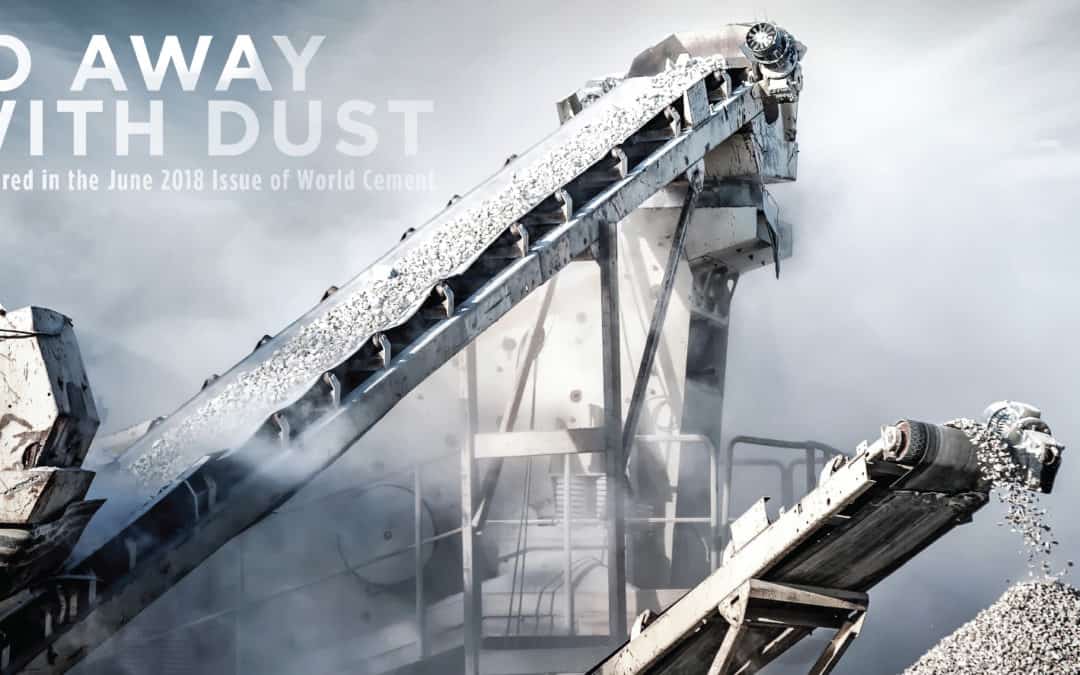
by Scott Stearns | Jul 13, 2018 | Hidden from Archive
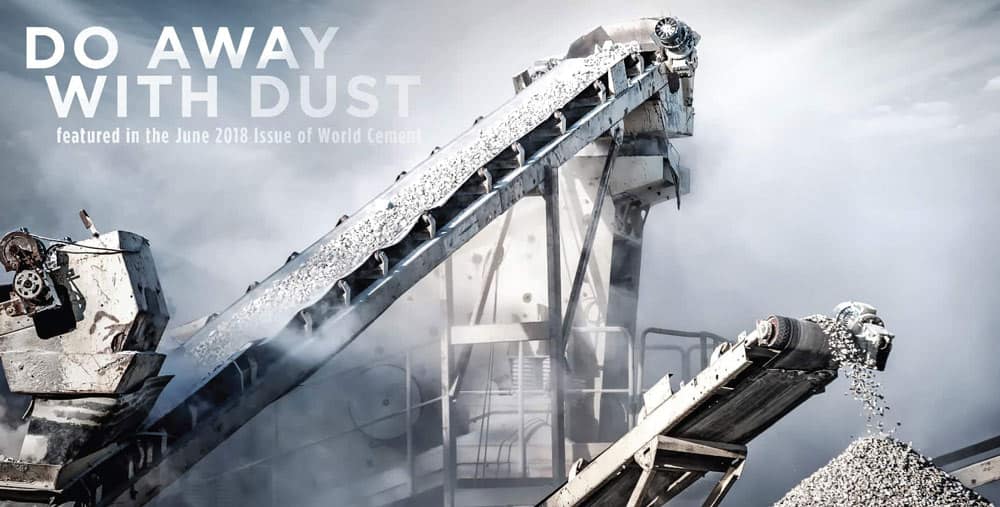
 Jeremiah Wann, Imperial Systems, discusses the benefits of Spot Filters when dealing with dust at cement plants.
Jeremiah Wann, Imperial Systems, discusses the benefits of Spot Filters when dealing with dust at cement plants.
SPOT FILTERS: ALL-PURPOSE CEMENT DUST SOLUTIONS
There are many opportunities when working with cement for dust to start accumulating. Anywhere that the material is moved around, dust is produced. With companies facing new and stricter OSHA silica exposure laws, there is a tremendous need for filters in cement applications. Respirators may not be able to handle the high levels of dust produced, and even if they can, they are uncomfortable and often not used correctly.
OSHA’s hierarchy of hazard management considers the first line of defense as eliminating the hazard. Since it’s probably impossible for you to eliminate all the processes in your facility that produce dust, it makes sense to move to the next step, which is to use engineering controls to manage the hazard. A dust collector is an engineering control because it manages the hazard without the employees needing to actively do anything (like wear PPE) to be protected.
BAGHOUSE VS. CARTRIDGE COLLECTOR
While baghouses have dominated the cement industry in the past, they have many disadvantages. A major one is that very high airflow needs to be maintained to move dust-laden air from the various points of capture to the baghouse, requiring high energy usage and large fans. Also, baghouses often have a huge number of bags, which are very difficult and messy to change. A confined space procedure may be required to get into the air plenum where the filters are accessed. The bags often have to be pulled onto metal cages and there are a variety of complicated mechanisms for attaching them to the tube sheet.
Cartridge collectors are appropriate for almost all types of fine dust, as long as it is dry, and they are more efficient and much easier to change than bags in a baghouse. Cartridge filters are pleated, which allows them to have a much higher surface area than a bag and pack a lot more media into a smaller space. The ease of changing filters and overall maintenance is often a major factor in choosing a cartridge collector over a baghouse. Baghouses may still be preferred for certain applications; a systems engineer can help determine which will work best. High temperature applications, for example, often require a baghouse because the bag material can handle extreme temperatures better. Systems engineers are experts in system design and should always be consulted on a dust collection project.
Many applications, particularly those handling large amounts of bulk solids, have had excellent results with cartridge collectors. Grain and silica industries are two examples of applications where cartridge collectors are often in use. Especially where silica dust is involved, cartridge collectors are becoming increasingly popular because of the extremely high efficiency of the filter media, which helps companies make sure they are meeting OSHA’s new silica dust regulations.
Some companies have questioned whether cartridge filters are durable enough to handle tough applications like silica or cement dust. The answer is that yes, with a properly designed system they can definitely handle this material. Options such as overbags can help protect the filters if the dust stream contains some larger particles in addition to smaller ones. A cartridge collector will also have baffles that cause the air to slow down and larger material to drop out of the air stream before it reaches the filters, protecting them from damage.
SPOT FILTERS
Another issue may pop up with a central vacuum system. Whether it uses bags or cartridges, there may be very long runs of ductwork to access all of the points of dust capture. It may not be practical to run duct all the way down a very long conveyor, for example, or to a machine that’s a long way from the collector. You may even need dust collection on a mobile piece of equipment like a cement dust transport truck that moves material around the site. For all of these situations, spot filters are a great option to consider.
A spot filter is a small cartridge collector that is placed directly at the location where dust is being produced. Examples of good locations for spot filters include:
• Drying areas
• Conveyor belts
• Transfer points
• Dump pits
• Roller mills
• Blenders and mixers
• Bucket elevators
• Hammer mills
• Transport trucks
• Vents and openings in storage areas
• Material loading and unloading
Spot filters usually have two or four cartridges. Because of the pleated material, cartridge filters are perfect for applications where the collector needs to be small and compact. They are also self-contained, which means they do not need any ductwork run to them. They have their own fan and run independently, so you can put one a long way from your central dust collection system, or use them if you don’t have a central dust collection system. Spot filters sit directly at the point where the dust is generated, allowing them to capture the maximum amount of dust and prevent any of it from getting out into the air of your facility or exposing your workers to silica-containing dust.
An advantage of spot filters is also that they are very easy to maintain. In a well-designed collector, cartridges slide out easily on rails and new ones slide back in. This only applies to vertical collectors where the cartridges hang from a tube sheet at the top of the collector; horizontal collectors where the filters are inserted horizontally on a supporting yoke are much more difficult to change. The filters do not need to be cleaned; they clean themselves with compressed air according to their scheduled settings and maintain efficiency by pulsing excess dust off the filter surfaces.
Spot filters are perfect for those areas in a facility where fugitive dust escapes into the environment. This dust can accumulate around the area and cause a health and safety hazard. Certain pieces of equipment may be inconvenient or nearly impossible to reach with ductwork or attach to a central collection system. For these, spot filters can capture that fugitive dust before it gets loose to build up around the area.
A patented version of a spot cartridge collector is specifically designed to be mounted on trucks transporting and unloading bulk dust. Specifically designed for sand on hydraulic fracturing sites, these collectors are able to be mounted directly on a truck that’s used to load and unload cement dust. This is is a complete plug‑and-play system. It can be mounted on sand transport trucks, at the points where material is being moved onto and off of transport belts, and over mixers and other equipment. The fans and airlocks are operated with hydraulics powered by the vehicle, and the compressed air is powered by a generator.
OSHA SILICA REGULATIONS
Because of the silica content of cement dust, new OSHA silica laws taking effect in 2018 will impact health and safety in the cement industry. These new laws strongly endorse engineering controls such as dust collection systems to prevent exposure to silica dust in the air.
In many places, we’ve seen a central baghouse removing dust from several main points of dust production. However, a lot of these places also have a number of other sites where fugitive dust is escaping and contaminating the area, accumulating around the facility. This dust can be easily stirred up and inhaled.
Health risks of inhaling silica dust include silicosis, a chronic lung disease where inhaled silica dust, such as the kind that is a component of cement, damages and scars the small air sacs of the lungs. This results in difficulty breathing and getting enough oxygen to the rest of the body. Exposure can also cause an acute form of silicosis where the damage causes the lungs to swell and fill with fluid. This type of silicosis is uncommon but very dangerous.
Chronic silicosis is very common among people exposed to silica dust. The scarring can progress to a condition called progressive massive fibrosis, where the lungs become stiff and full of scar tissue. When the disease is severe, people may need oxygen support to be able to breathe. Silicosis can cause death.
The health risks of silica include other deadly conditions. Silica is a known carcinogen, meaning it causes lung cancer. It also makes you more likely to get lung diseases like emphysema, tuberculosis or bronchitis. Because the cement industry has been targeted as one in which the dust includes silica, OSHA is likely to be very vigilant about dust management in cement handling applications.
CONCLUSION
Spot filters may be exactly the solution you are looking for if you have equipment such as conveyor transfer points, mixers, elevators, or other places where dust has a tendency to escape. If you don’t have a current dust collection system, or if it’s not practical to attach these pieces of equipment to the current system, a spot filter can be a very efficient solution. It sits directly on the area where dust is produced, captures it before there is any opportunity for it to get out into the air in the facility, and contains it safely.
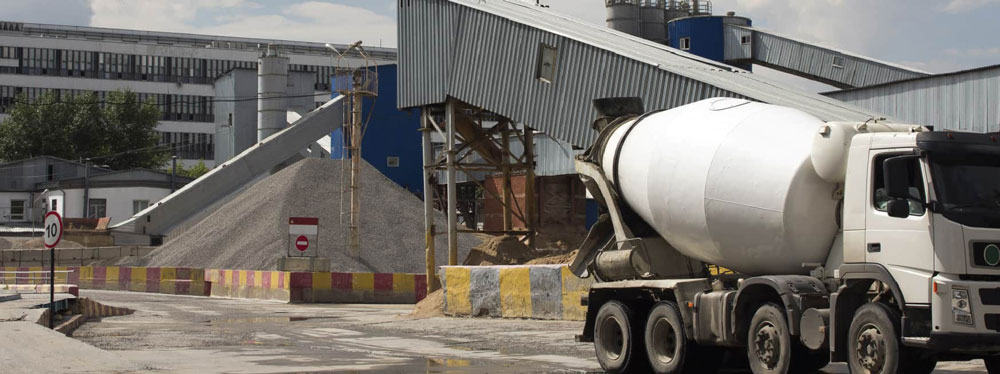
Read more
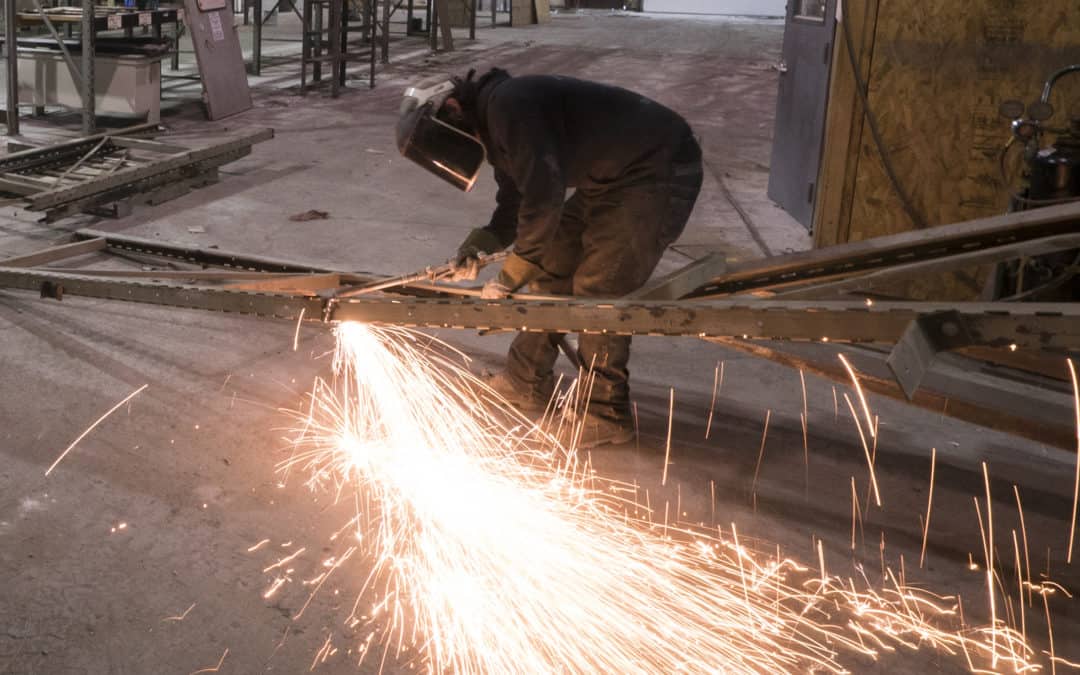
by Imperial Systems | May 16, 2018 | Uncategorized
Sometimes it’s necessary to cut or weld, or hot work in the vicinity of your dust collector. However, this can be extremely dangerous if your dust is explosive. A dust collector, after all, is an accumulation of dust. If that material is combustible, careless hot work could lead to a catastrophic explosion.
“Hot work” is defined by OSHA as “welding, brazing, cutting, soldering, thawing pipes, using heat guns, torch applied roofing and chipping operations, or the use of spark-producing power tools, such as drilling or grinding”. Most of us would think twice about welding or cutting in near a dust collector or any other combustible dust. But some tools, even ones that shouldn’t produce sparks, may have faulty wiring. This can lead to a fire or explosion.
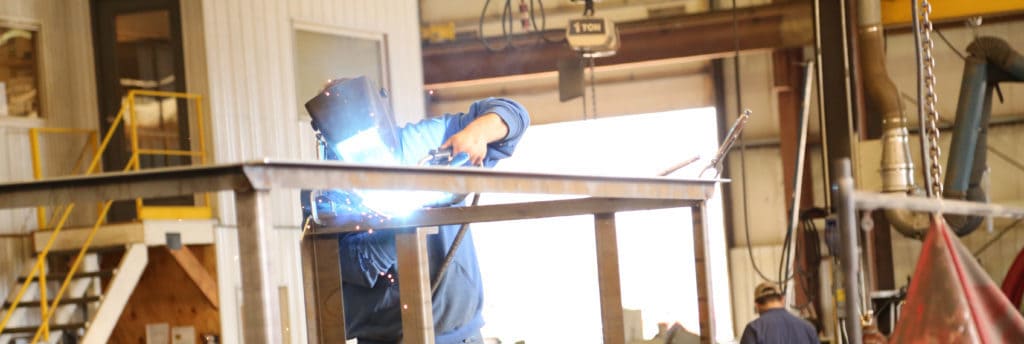
Hot Work Procedures
No hot work should be done near the dust collector without the correct procedures (see NFPA 51B). This NFPA standard specifically defines the procedures for conducting this type of work anywhere that it might cause an explosion.
Hot work near or on a dust collector might include repairs or adding/removing a piece of equipment or ductwork. It may include any number of other projects. Before doing this kind of work around the dust collector, you must have a hot work procedure IN WRITING:
- Shall be in writing and available to anyone conducting hot work in the area
- It must require an inspection of the work area before the work starts
- Must have a permit signed to show that all phases of the work have been inspected and approved
The program should assess safety equipment in the area. On a dust collector that might include a spark arrestor, spark detector, fire suppression or sprinkler system, abort gate, explosion venting, or other types of fire and explosion safety devices.
Hot work may require completely blocking the ductwork to the dust collector, or if the work is on or close to the collector, may require removing the filters, emptying or removing the hoppers, and thoroughly cleaning the entire dirty air side of the dust collector. a strong g recommendation is that a fire suppression system is in place before hot work begins. This will suppress any fire that might start. Further, remove as much of the dust as possible if it is explosively combustible.
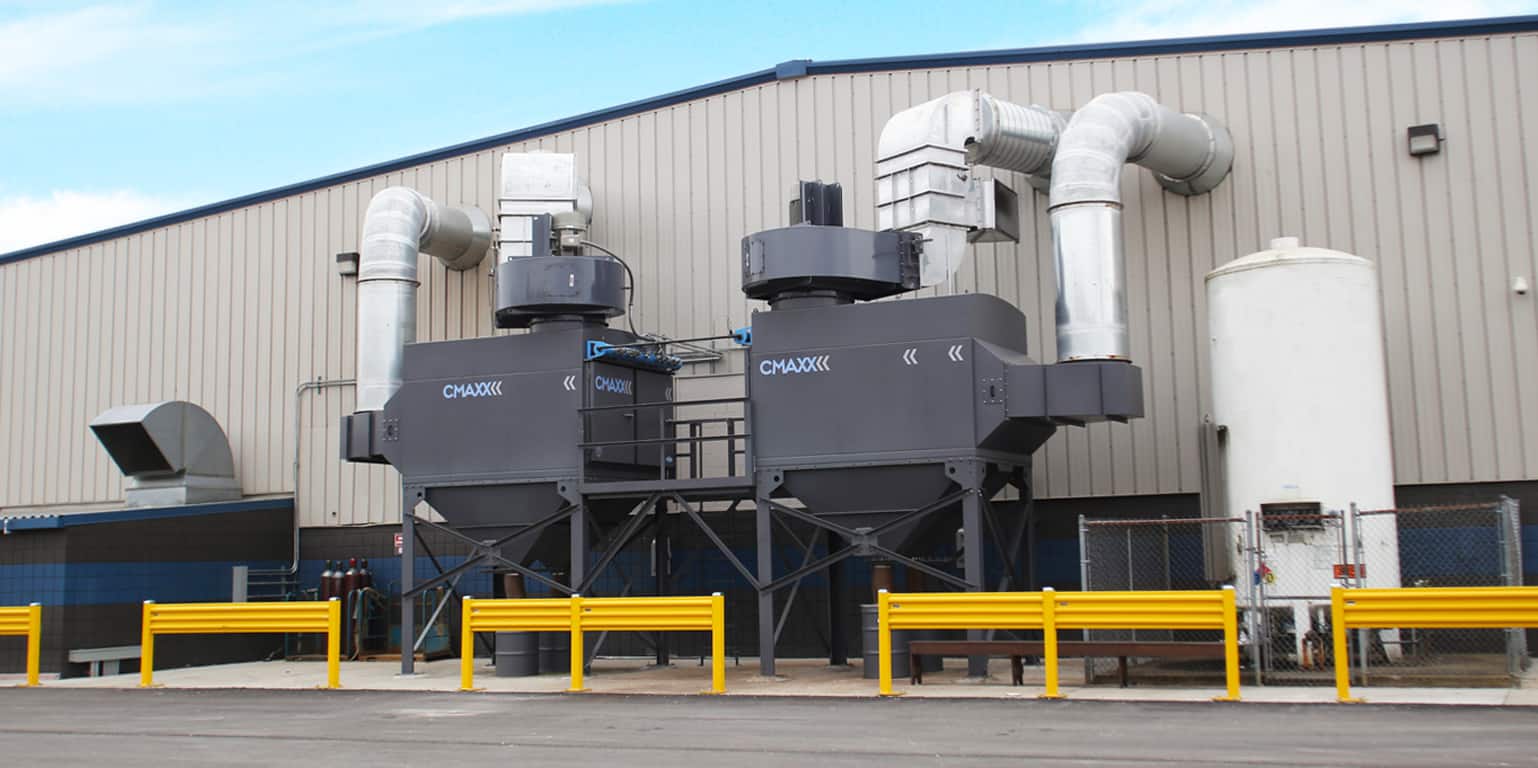
Permits Ensure Safety
NFPA 51B specifies that the company safety specialist will issue a permit for work to proceed once achieving an inspection and determination of safety for hot work. It’s the job of this designated safety specialist to inspect the area of hazards. The specialist ensures the removal of all combustible dust. They confirm the isolation of all sparks and heat and establish safety procedures in the event of a fire.
No one should be allowed to perform ANY type of hot work, including the use of spark-producing power tools, in the vicinity of the dust collector without a permit. However, it happens all the time and puts lives at risk if the dust is combustible. Take the time to assess this hazard in your own workplace. If the hazard exists, your safety professional should set up hot work procedures to make sure no one puts themselves or the facility at risk.
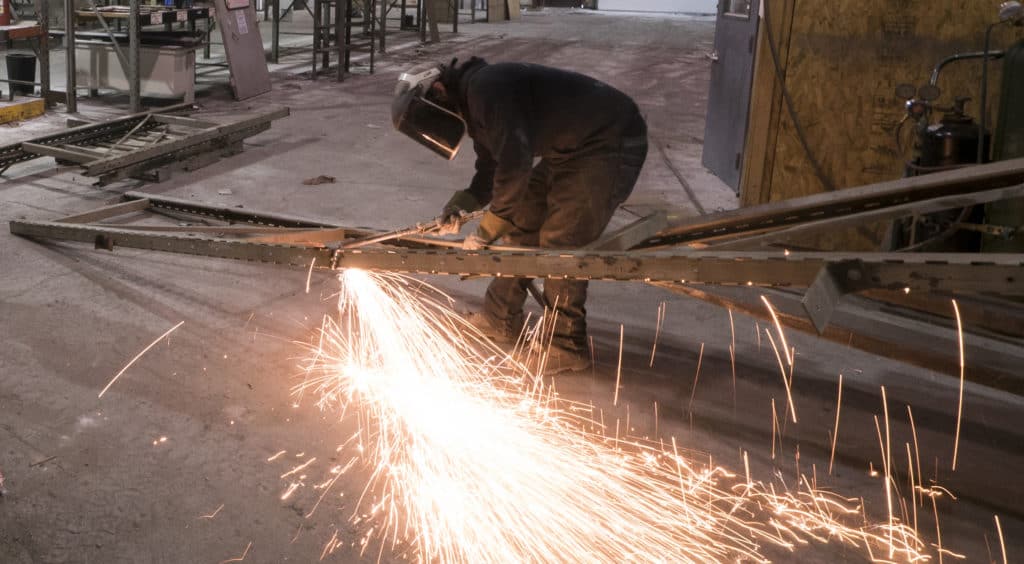
Read more













 Jeremiah Wann, Imperial Systems, discusses the benefits of Spot Filters when dealing with dust at cement plants.
Jeremiah Wann, Imperial Systems, discusses the benefits of Spot Filters when dealing with dust at cement plants.



